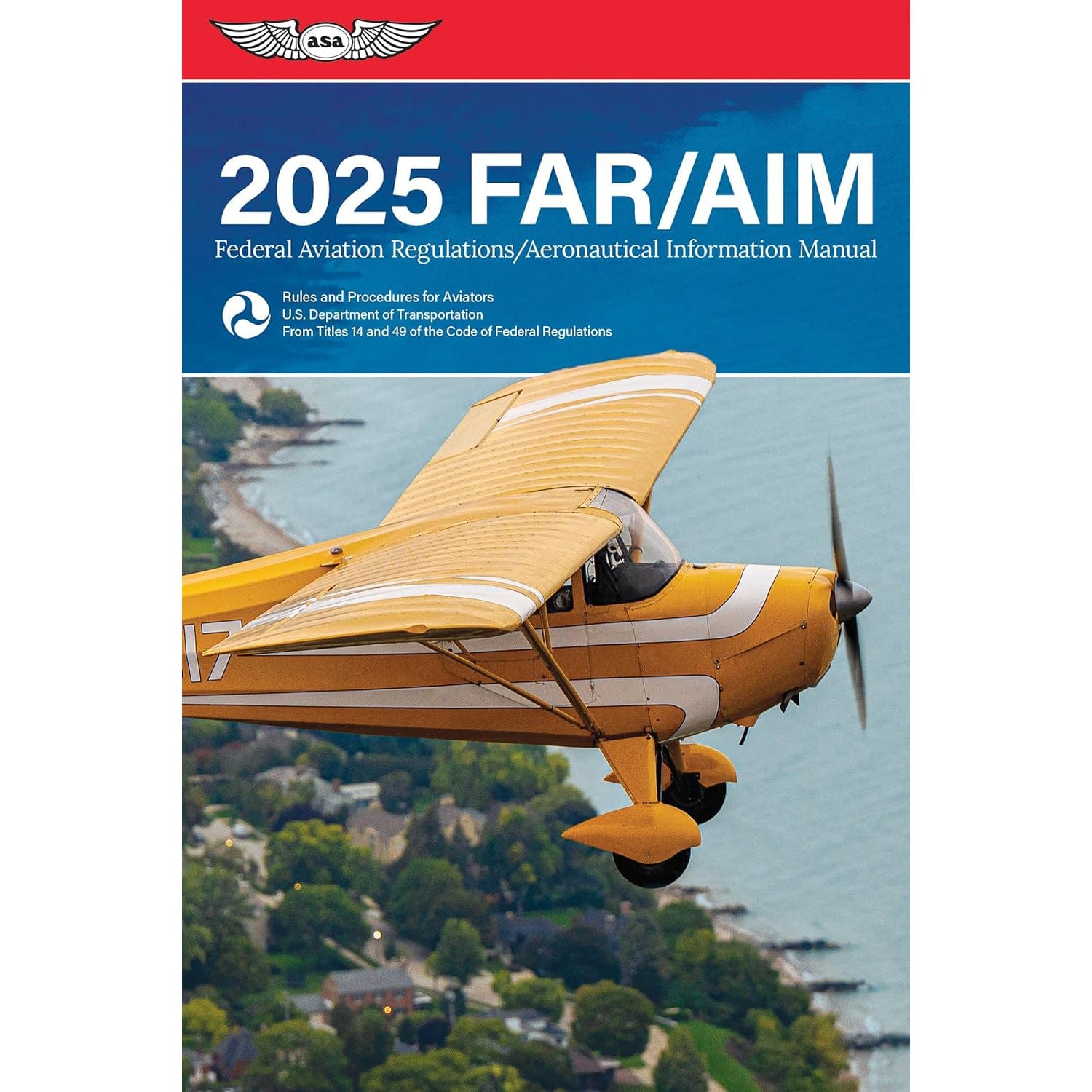O sistema Pitot-estático é muito importante para a segurança da aeronave e daqueles a bordo. O sistema está envolvido na alimentação de instrumentos como: o indicador de velocidade do ar, o altímetro e o indicador de velocidade vertical (VSI).
Quando se trata de aeronaves de aviação geral, esse sistema é mais propenso a falhas devido à falta de redundância em comparação a aeronaves maiores e mais complexas.
Às vezes, as falhas são causadas por gelo, detritos ou, muitas vezes, por descuido humano. Ter um mau funcionamento no sistema Pitot-estático pode causar leituras enganosas do instrumento e isso pode colocá-lo em uma situação perigosa.
É por isso que aprender sobre o sistema, reconhecer sinais de falha e se preparar para esses cenários são importantes e serão abordados neste artigo.
RESUMO
-
O sistema Pitot-estático alimenta instrumentos de voo e é vulnerável a falhas em aeronaves de aviação geral devido a fatores ambientais e supervisão humana.
-
Reconhecer falhas envolve aprender os sintomas distintos causados por tubos de Pitot bloqueados ou portas estáticas.
-
Os pilotos podem gerenciar riscos durante falhas ativando o calor de Pitot, usando uma fonte estática alternativa e verificando outros instrumentos.
-
Inspeções regulares pré-voo, manutenção do sistema e preparação de um plano de resposta a falhas são as melhores maneiras de evitar problemas de Pitot estático.

Sinais de falhas do sistema Pitot-estático
É importante que os pilotos sejam capazes de reconhecer uma falha e isso começa com a compreensão de como o sistema Pitot-estático funciona. O sistema depende de duas fontes de pressão:
-
O tubo de Pitot para pressão dinâmica (usado pelo indicador de velocidade do ar).
-
Portas estáticas para pressão estática (usadas pelo altímetro e VSI).
Bloqueios que estão em qualquer um desses componentes resultam em sintomas distintos. Vamos cobrir isso na tabela abaixo.
|
Efeito de fontes Pitot/estáticas bloqueadas nas indicações |
Velocidade indicada |
Altitude Indicada |
Velocidade vertical indicada |
|---|---|---|---|
|
Fonte de Pitot bloqueada |
Aumenta com o ganho de altitude, diminui com a perda de altitude |
Não afetado |
Não afetado |
|
Uma fonte estática bloqueada |
Impreciso em deslizamentos laterais; muito sensível em turbulências |
Não afetado |
Não afetado |
|
Ambas as fontes estáticas bloqueadas |
Diminui com o ganho de altitude, aumenta com a perda de altitude |
Não muda com o ganho ou perda real de altitude |
Não muda com variações reais na velocidade vertical |
|
Fontes estáticas e de Pitot bloqueadas |
Todas as indicações permanecem constantes, independentemente das mudanças reais na velocidade do ar, altitude e velocidade vertical |
Todas as indicações permanecem constantes |
Todas as indicações permanecem constantes |
Ok, vamos esclarecer isso:
-
Um tubo de Pitot bloqueado afeta apenas o indicador de velocidade no ar.
Exemplo: um tubo de Pitot completamente bloqueado fará com que a velocidade do ar se comporte como um altímetro, aumentando conforme você sobe e diminuindo conforme você desce. Se o furo de drenagem ainda estiver aberto, a velocidade do ar será zero.
-
Uma porta estática bloqueada impacta vários instrumentos. O altímetro e o VSI congelarão, o indicador de velocidade do ar mostrará valores incorretos dependendo se você está acima ou abaixo da altitude onde o bloqueio ocorreu.

Causas comuns de falhas estáticas de Pitot
O sistema Pitot-estático pode ser vulnerável a uma variedade de fatores externos, e até mesmo pequenos descuidos podem levar a mau funcionamento:
-
Condições ambientais
Borrões de lama ou outros insetos podem bloquear o tubo de Pitot. Também pode haver gelo e água da chuva que podem entupir portas estáticas, geralmente no inverno.
-
Supervisão Humana
Tampas de Pitot deixadas ou fita cobrindo acidentalmente as portas estáticas após a lavagem da aeronave são erros bastante comuns antes do voo.
-
Desgaste
Com o tempo, sujeira ou detritos podem se acumular no sistema. Isso causa bloqueios que nem sempre são imediatamente perceptíveis.

Ações que os pilotos podem tomar durante falhas
Se ocorrer uma falha no meio do voo, primeiro, tente o seu melhor para manter a calma e confiar no seu conhecimento do sistema. Respire fundo e então comece a solucionar o problema. Aqui estão algumas etapas a serem consideradas:
-
Ative o aquecimento Pitot — se sua aeronave estiver equipada com este recurso, ligue o aquecimento Pitot para limpar o gelo do tubo de Pitot.
-
Mudar para fonte estática alternativa --Muitas aeronaves são equipadas com uma fonte estática alternativa. Ativá-la pode restaurar a funcionalidade do altímetro e do indicador de velocidade vertical.
-
Instrumentos de verificação cruzada — Use outros instrumentos, como velocidade de solo do GPS ou configurações de potência conhecidas para estimar a velocidade do ar e a altitude.
-
Quebre o vidro do VSI — Como último recurso, quebrar o vidro indicador de velocidade vertical pode criar uma nova referência de pressão estática.

Prevenção de falhas estáticas de Pitot
A melhor maneira de evitar uma falha estática do Pitot é por meio de uma preparação completa e realização de manutenção regular.
Inspeção pré-voo
Durante sua caminhada, verifique se há obstruções no tubo de Pitot e nas portas estáticas. Lenços de papel ou sucção suave podem ajudar a detectar e remover bloqueios de água.
Manutenção de rotina
Limpe o sistema regularmente e substitua os componentes conforme necessário. Certifique-se de que as tampas de Pitot e estática sejam removidas antes do voo.
Teste de aquecimento do Pitot
Sempre verifique a função de aquecimento do Pitot antes do voo, especialmente em climas frios.
Faça um plano
Quando se trata disso, a preparação é a chave principal para lidar com falhas do sistema pitot. Antes do seu próximo voo, tente se questionar:
-
Como seus instrumentos se comportariam se o tubo de Pitot estivesse bloqueado?
-
Você sabe quando ativar a fonte estática alternativa?
-
Que ajustes você deve fazer nos seus mínimos de pouso?
Ter um plano claro garante que você esteja pronto para qualquer cenário. Lembre-se, falhas de Pitot-estáticas são mais comuns do que falhas de motor, e a preparação pode fazer toda a diferença.

Perguntas frequentes
-
Como posso saber se meu tubo de Pitot está bloqueado?
Se o indicador de velocidade não aumentar durante a decolagem ou se comportar como um altímetro durante a subida e a descida, o tubo de Pitot provavelmente está bloqueado. -
Uma porta estática bloqueada pode afetar meu indicador de velocidade no ar?
Sim. Se a porta estática estiver bloqueada, o indicador de velocidade no ar mostrará velocidades mais baixas acima da altitude de bloqueio e velocidades mais altas abaixo dela. -
Qual é a fonte estática alternativa?
É uma fonte alternativa de pressão de ar que ignora a porta estática, geralmente puxando ar da cabine para restaurar a funcionalidade do instrumento. -
É seguro quebrar o vidro VSI?
Quebrar o vidro VSI é uma opção de último recurso para restaurar a pressão estática e só deve ser feita quando outras soluções não estiverem disponíveis.
Remover
O sistema pitot-estático é uma ferramenta importante e mesmo que você nunca enfrente uma falha, praticar essas etapas fará de você um piloto melhor. Planeje o inesperado e evite pensar "isso não vai acontecer comigo", esteja preparado para qualquer coisa e revise vários métodos de segurança que você pode executar durante seu voo. Se você for um aluno em treinamento, seu instrutor de voo provavelmente executará alguns cenários com você para testar como você lida com a perda de um de seus painéis de instrumentos. Então, continue aprendendo e planejando.
Para mais dicas sobre segurança e sistemas de aviação, confira nosso Guia do Sistema Pitot-Estático .
Voe com segurança e esteja preparado!
Interessado em instrumentos aeronáuticos?
Nossos guias foram projetados para ajudar!
-
Como funciona: Indicador de velocidade do ar (guia completo)
-
Indicador de velocidade vertical da aeronave (VSI): como funciona?
-
Os 4 tipos de velocidade no ar: como cada um funciona (guia completo)
-
O guia completo para instrumentos de aeronaves [mais do que apenas o pacote de 6]
Você achou este artigo útil?
Você acha que esquecemos de uma pergunta importante da entrevista? Deixe-nos saber nos comentários abaixo!









